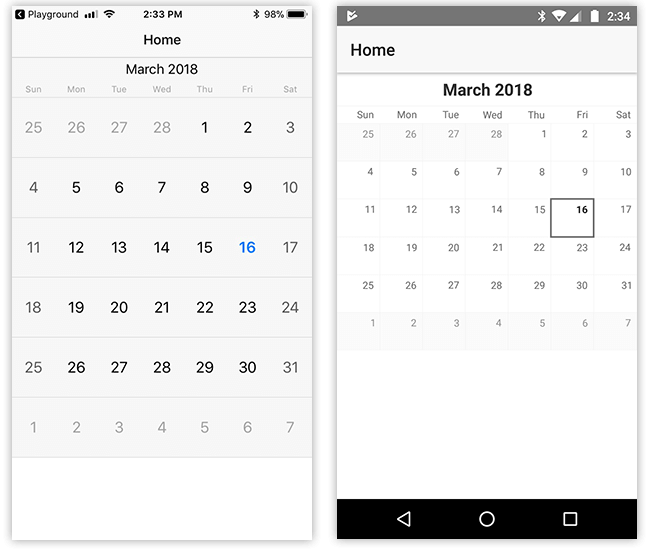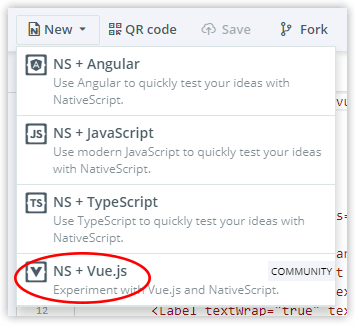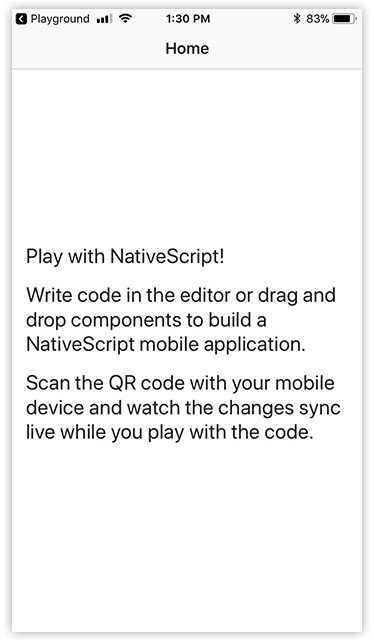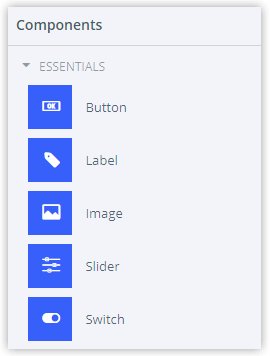A Brief Intro to Using Vue.js with NativeScript
Welcome to a week of Vue.js on the NativeScript blog! This week we are bringing you loads of Vue-related content, focusing on the NativeScript-Vue plugin that brings the world of Vue.js to native mobile app development.
Coming up this week you'll find topics such as:
- A Brief Intro to Using Vue.js with NativeScript (wait...that's today)
- Using Plugins in a NativeScript-Vue App (Tuesday)
- Setting Up a Robust NativeScript-Vue Development Environment (Wednesday)
- The Writing and Rewriting of Elocute (Thursday)
Today we are going to focus on NativeScript-Vue for n00bs. Think along the lines of: Why might I want to use Vue (versus Angular or plain JavaScript)? How do I get started with NativeScript-Vue? And where do I go next?
On that note, let's get started!
TIP: Watch the NativeScript-Vue 2.0 webinar on YouTube NativeScript-Vue 2.0: Back to the Vueture
Why Vue.js?
The Vue.js framework was first released in 2014 by former Googler Evan You. While at Google, Evan was a heavy user of AngularJS (not to be confused with Angular 😀), which makes a lot of sense as we start drawing the lines between these two frameworks.
Evan's experience with AngularJS inspired him to write a new framework that has a lighter touch, or at least less a complex feel, than Angular. This effort became what we know today as Vue.js.
Today Vue stands as one of the most popular JavaScript frameworks, behind Angular(JS) and React. Why? At 20KB the core library is tiny, but contains enough powerful capabilities to make it an engaging alternative to Angular or React. Vue contains features such as:
- Virtual DOM;
- Templating;
- Event handling;
- Reactive and composable view components;
- CSS-based transitions and animations;
- Computed properties;
- Performant and focused core library;
- And much more...
Sound a bit like AngularJS?
Fast forward ➡️ to 2017. NativeScript is taking off with its Angular integration. But Angular is admittedly not for everyone, and the NativeScript Core (a.k.a. vanilla JavaScript) option doesn't provide enough structure for others. Due to the extensible nature of the NativeScript framework, it became obvious that a Vue.js integration was achievable. Enter Igor Randjelovic and NativeScript-Vue:
Managed to use a @vuejs instance to control a @NativeScript native label! Can't express how happy I am about a label 😂 pic.twitter.com/BQUdxNEfEJ
— Igor Randjelovic (@igor_randj) April 19, 2017
What's this NativeScript-Vue Thing?
The beauty of open source is watching anyone justly inspired and skilled build on top of a foundation you've provided. Igor's NativeScript-Vue concept was latched onto immediately by the NativeScript Developer Relations team and some prominent community members. We all realized we had something special in our hands.
So what is NativeScript-Vue? Quite simply it's a plugin that enables the usage of Vue.js with NativeScript. It's not a fork of Vue nor is it a fork of NativeScript. It builds on those frameworks' capabilities to provide you with the means to create truly native, cross-platform, apps with this shiny new tool everyone is raving about.
Since Vue.js doesn't (directly) interact with the browser's DOM (similar to React and Angular), code you might have thought was only meant for the web works just fine in a NativeScript app (save for different template syntax):
const Vue = require("nativescript-vue");
new Vue({
methods: {
onButtonTap() {
console.log("You tapped the button!");
},
},
template: `
<Page class="page">
<ActionBar title="Home" class="action-bar" />
<ScrollView>
<StackLayout>
<Label text="Hello World!" />
<Button text="Tap Me" @tap="onButtonTap" />
</StackLayout>
</ScrollView>
</Page>
`,
}).$start();
Now if you're here, you probably:
- Want to create a native iOS and/or Android app (hybrid solutions just don't cut it);
- Want to keep using JavaScript;
- Want to keep using (or start using!) Vue.js.
So what's the catch?
Transitioning from the web to native mobile isn't without some learning curve. When learning to Vue.js the NativeScript way, you have to consider:
- You'll want to learn the in's and out's of the NativeScript CLI or NativeScript Sidekick;
- You'll have to grok the concept of NativeScript UI elements (think about it like a better version of the DOM 😉).
How Do I Get Started?
If you're new to NativeScript, I apologize as I've gotten a bit ahead of myself. NativeScript is an open source (Apache 2 licensed) framework for building native, cross-platform mobile apps from one codebase. Think along the lines of JavaScript + CSS + XML-flavored markup with a bit of NativeScript UI magic turns this:
<Page class="page" xmlns="http://www.nativescript.org/tns.xsd" xmlns:calendar="nativescript-ui-calendar">
<ActionBar title="Home" class="action-bar"></ActionBar>
<StackLayout>
<calendar:RadCalendar />
</StackLayout>
</Page>
...into this:

For more information on getting started with NativeScript, take a look at our tutorials.
With the pleasantries out of the way, let's take a quick look at using NativeScript-Vue to create a quick app that will work equally well on iOS and Android.
NativeScript Playground
There are a few different ways to really dig in with NativeScript:
They each have their advantages, but today we want the most friction-free route, which I think is the Playground.
The NativeScript Playground provides a web-based environment for quickly scaffolding sample apps. Whether you are experimenting with NativeScript or want to share a code sample with someone, the Playground is an ideal way for you to write code and run it on a physical device with minimal interference.
To really see the power of the NativeScript Playground, you're going to want to download a couple of free apps from the App Store or Google Play:
- iOS: Playground and Preview
- Android: Playground and Preview
Two apps? What gives!? One app (Playground) let's you scan a Playground-provided QR code and load your code into the other app (Preview). You can think of Preview as a kind of a dummy container that your app runs inside.
Getting Started
With the NativeScript Playground open, click the New menu and choose to create a new Vue.js instance (if you're not already using a Vue template):

Next, click the QR Code menu option and scan that code using the previously downloaded NativeScript Playground app on your device. You should see something like this:

Ok, that's not the coolest example of a native mobile app. But it is a native app, using native UI. Let's pretty it up a bit!
Go ahead and delete everything inside of your <StackLayout> tag. Then, add an <Image> and a <Button> element by dragging and dropping them from the Components menu:

...into your code (within the <StackLayout> tag).
Your resulting template should look like this:
<Page class="page">
<ActionBar title="Home" class="action-bar" />
<ScrollView>
<StackLayout class="home-panel">
<Image src="https://play.nativescript.org/dist/assets/img/NativeScript_logo.png" />
<Button text="Button" @tap="onButtonTap" />
</StackLayout>
</ScrollView>
</Page>
When you hit the Save button (or just cmd/ctrl-S), you should see the app automatically refresh on your device.
We can now pretty it up a little bit by using the NativeScript Core Theme. This theme ships with every new NativeScript app and is applied to individual UI elements with classes. Go ahead and add class="btn btn-primary" to your <Button> element. You should end up with a nicer looking (but still native) button:

You also may have noticed that the Playground populated your methods object for you with an onButtonTap method:
methods: {
onButtonTap() {
console.log("Button was pressed");
},
},
Go ahead and tap on the button. Back in the Playground you should see an entry in the Device Logs, a great way to perform basic debugging:

At this point, you should consider logging in to save (and share) your Playground with others.
Hey, you're a NativeScript AND Vue developer now! Without writing any code! 😜
What's Next?
The world is your oyster, but for now, stay tuned to the NativeScript blog all week and you'll learn a lot more from some folks who are a lot smarter than I.
But if you're itching for some more NativeScript-Vue content, take a look at the quick start available at nativescript-vue.org and don't forget to sign up for the NativeScript-Vue webinar!